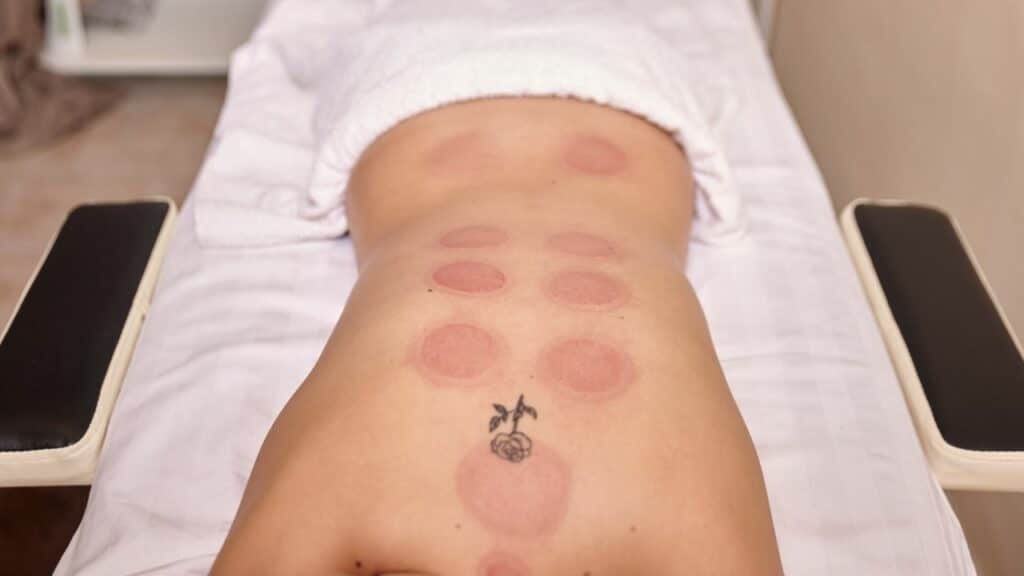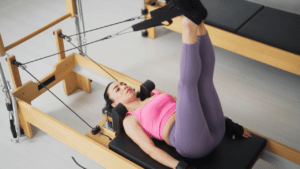
In the realm of elite athleticism, where the quest for an edge blurs the lines between tradition and innovation, cupping therapy has carved its niche. First, the unmistakable, dark circular marks began appearing on the chiseled physiques of Olympic swimmers. Soon, NBA powerhouses and NFL titans sported these badges of recovery with pride. Now cupping has become a must-have in every athlete’s recovery arsenal. Just like massage guns, foam rollers, kinesiology tape, and compression boots, it’s widely used to soothe sore muscles, treat injuries, and boost mobility.
Beyond the visual proof, however, lies the question: What does cupping do for athletes? driving today’s top performers to turn to this age-old ritual? Let’s peel back the layers on this headline-grabbing trend and explore what cupping therapy is all about and why athletes can’t seem to get enough.
The Ancient Roots of Cupping Therapy
Before it was the talk of locker rooms, cupping was a staple in ancient Chinese, Egyptian, and Middle Eastern cultures. Although it is believed that cupping therapy was used in Chinese medicine as early as 3,000 years, the oldest known reference, in 1550 BC, is in a papyrus from ancient Egypt. The suction was thought to dislodge toxins and free up stagnant energy.
The first documented cups were made of hollowed-out animal horns – talk about old school! Over centuries, cupping evolved across cultures. Ancient Greek physician Hippocrates praised it for treating chest congestion. Traditional Middle Eastern healers used cupping to trigger the body’s self-healing abilities.
How Does Cupping Work?
Cupping, at its core, is grounded in the principle of increasing blood flow to specific regions of the body. By doing so, it aims to promote healing, alleviate muscle tension, and potentially enhance overall well-being.
The mechanism is relatively straightforward: when the cup is placed on the skin and a vacuum is created, the suction pulls the skin and facia layer upward. Facia is the connective tissue that covers muscles, joints, and ligaments.
The suction of cupping kickstarts several bodily processes. It creates space between skin, fascia and muscles that helps fluid flow between tissue layers, allowing metabolic waste to drain via the lymphatic system for processing. Cupping also pulls on and breaks capillaries under the skin. This microtrauma triggers the repair response, increasing circulation.
The result? Increased blood flow to areas where it may be stagnant resulting in increased nutrient supply and oxygenation, release of knots, improved joint mobility, and reduced inflammation.
There are two primary methods of cupping:
- Dry Cupping: This is purely suction-based. The therapist places a cup on the target area, and either heat or an air pump is used to create the necessary vacuum. The skin gets drawn into the cup, which can be left in place for several minutes. The end result is the familiar circular bruise, a testament to the rush of blood to that region.
- Wet Cupping: A more involved procedure, wet cupping starts similarly to dry cupping. However, after a few minutes, the cup is removed, and small superficial incisions are made in the skin. The cup is then re-applied to draw out a small quantity of blood. Proponents believe this method helps remove harmful substances and toxins from the body.
Why Do Athletes Do Cupping? What’s the Benefit?
Athletes looking for an edge have started using cupping as part of their training. Elite athletes like Michael Phelps and Alexander Ovechkin have been seen sporting the trademark round bruises, leading to greater public awareness.
While more research is needed to fully understand the benefits of cupping, studies suggest that this therapy can provide numerous advantages for athletes. Let’s explore how cupping can potentially enhance athletic performance!
- Increased range of motion by releasing tight muscles and fascia
- Improved circulation for better nutrient delivery and recovery
- Reduced inflammation and pain to facilitate faster healing
- May increase muscle strength during recovery
- Relaxation of the body to improve performance
In addition, cupping can be used as a preventative measure. Regular sessions help keep muscles loose and joints supple, reducing the risk of injury. Professional athletes may also use cupping therapy between competitions for faster recovery.
Potential Side Effects of Cupping
While generally safe when performed correctly, cupping therapy can lead to mild side effects such as bruising, redness and swelling. This is normal and should fade within a few days following the treatment. Also, avoid placing cups over areas with open wounds, rashes, broken skin, or varicose veins. Additionally, be cautious around the neck and any lymph nodes in that area. If you have any concerns about cupping, it’s always a good idea to consult with your doctor before starting the treatment.
Is It Okay to Do Cupping at Home?
Although starting with a professional cupping therapist is ideal to learn proper technique and get a feel for the therapy, it is possible for some people to carefully try cupping at home between sessions.
There are a variety of at-home cups available, although it’s important to ensure you’re using quality products that won’t cause any irritation or discomfort. To limit any unwanted side effects, make sure you read the instructions before beginning the treatment.
Here are some tips to do cupping therapy at home:
- Purchase a cupping set designed for home use. Opt for soft silicone or plastic cups, which are safer for beginners. Stick to 4-6 medium-sized cups to start. Cups in diameter of 2.5 to 3 inches are best for large muscle groups. The smaller 1-inch cups are good for smaller areas.
- Read up on proper cupping methods or watch tutorial videos to educate yourself before attempting it solo. Proper placement and suction levels are key.
- Focus on large muscle groups like the back, thighs and shoulders. Avoid fragile joints or any injured, inflamed or irritated areas.
- Warm up the target area first with a hot shower, heating pad or hot towel compress to bring blood to the surface.
- Apply a thin layer of massage oil, balm or lotion to allow the cups to glide and create a seal. Do not over-oil.
- Start with very gentle suction and short 2 – 5 minute sessions to assess your tolerance. Slowly increase pressure and time from there.
- Pay close attention to your body’s signals – any sharp radiating pain means stop immediately.
- Allow cupping marks to fully fade between sessions, at least 10-14 days for amateur cupping.
- Sanitize equipment carefully after each use and store properly to maintain functionality.
At-Home Cupping Gets a High-Tech Makeover
Cupping therapy may have ancient roots, but some exciting new innovations are giving this traditional technique a modern twist, making it even more accessible, safe, and effective as an at-home recovery method.
Smart cupping sets allow you to digitally control the suction levels through an app on your smartphone or tablet. This removes the manual effort of suctioning and provides programmable, customizable treatments personalized to your body.
Another futuristic advancement is the combination of cupping with red light therapy for amplified healing effects. Using LEDs, red wavelengths of light are emitted inside the cups and absorbed by the skin. The light boosts collagen production, accelerates cell repair, and reduces inflammation – doubling down on cupping’s benefits.
The digital control and light therapy integration not only enhances outcomes, but also improves convenience and safety for amateur cupping done solo. You can carefully customize and monitor the pressure amounts in real-time without risk of over-suctioning.
Final Thoughts on Why Athletes Do Cupping?
The quest for peak athletic performance has always been a fascinating journey of merging ancient wisdom with modern science. Cupping, with its deep-rooted traditions, has found its way into the elite athlete’s toolkit not merely as a passing trend, but as a testament to its potential benefits. From increasing blood flow and promoting healing to reducing inflammation and enhancing mobility, the therapy offers a range of advantages that many athletes swear by.
Yet, like all therapeutic methods, it’s essential to approach cupping with an informed mindset. As the practice evolves with technological advancements like smart cupping sets and red light therapy, the opportunity for individualized and safe treatments grows.
If you’re keen on expanding your recovery repertoire in your home gym, cupping presents an opportunity to delve into a method tried and tested over millennia. For athletes and everyday individuals alike, this ancient practice presents an invitation to explore new pathways to wellness, recovery, and peak performance.



